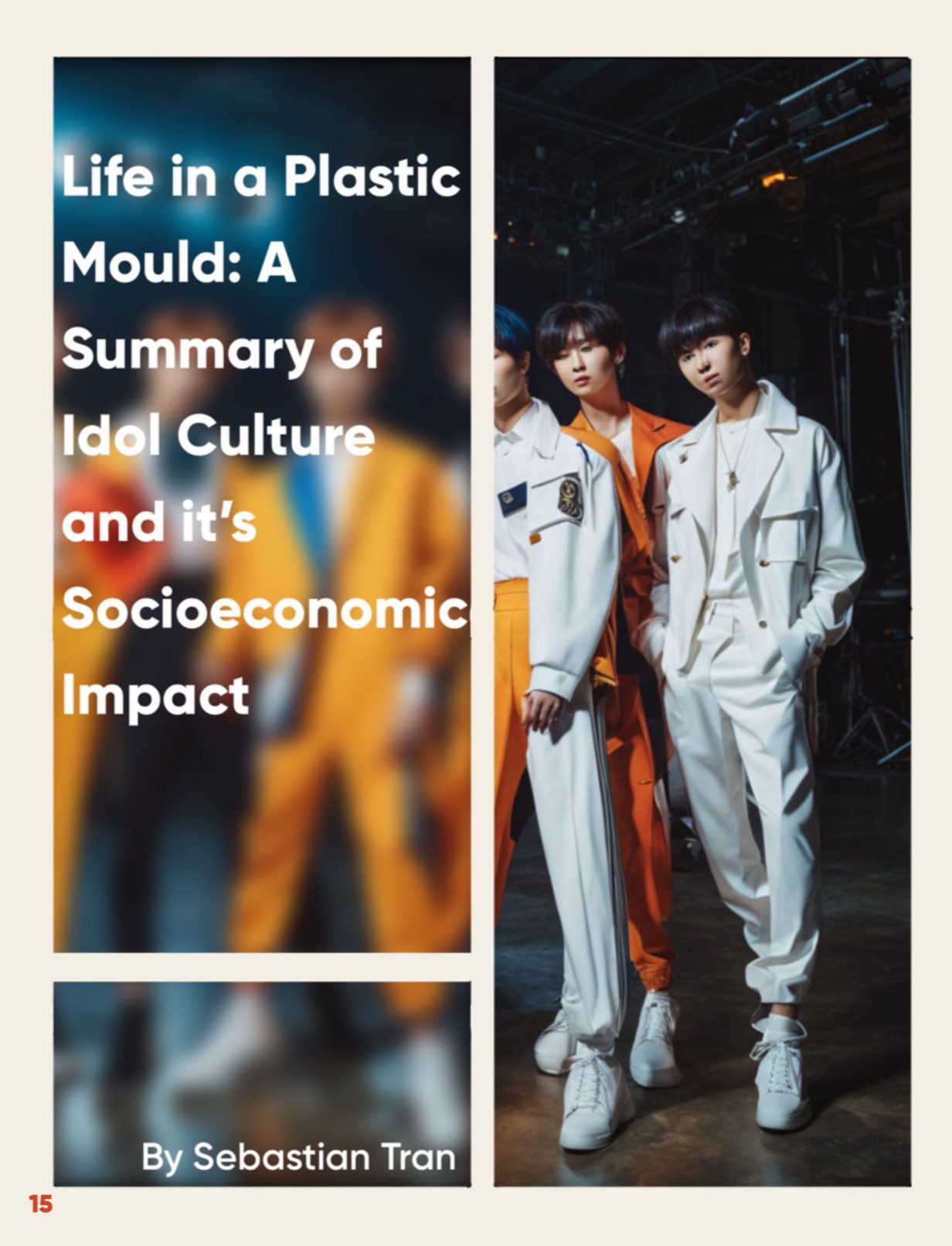By Sebastian Tran (Asian American)
In early March, news broke that popular k-pop singer Karina has a boyfriend, though it’s not known who he is or how long they have been dating.
That sentence doesn’t mean anything to most people glancing at news headlines in the United States. If anything, it sounds mundane, like something that would scroll through a sizzle reel on E! News. However, that’s only because Europe and the Americas have a very different understanding of the entertainment industry compared to developed nations in Asia, particularly Japan, China, and of course, Korea.
The phenomenon is known as idol culture, originating in the early 20th century with pop music artists in Japan. The word “idol” is apt: its original definition is “an image or representation of a god used as an object of worship” , though it is associated with music in the modern day due to Japanese idol culture itself, as well as TV programs like American Idol. Idols, from their inception in the 1960s, were designed to be placed on a pedestal as untainted and unerring people that the general public look up to and adore.
Idols as an industry began with child stars, specifically teenage girls trained in performance from youth, though companies now sponsor talent of all ages and both sexes. Discussions of idols in journalism since its inception often discusses the end goal of training young talent – enticing children with the prospect of fame and fortune, in hopes of roping more young talent into the chain to make more money off of more starry-eyed children. In the words of many articles and agencies, idols are meant to “sell dreams”. But that’s only half of what idol culture entails. The more predatory half of the business comes into play with the adult audience that idols garner, intentionally or not.
In South Korea, shortly after she confirmed her relationship publicly, fans of Karina held mass campaigns both online and outside her talent agency, SM Entertainment, in order to express their outrage at the reveal.
One truck that pulled up to SM’s headquarters, reported by the BBC, bore an electronic display that read, the loge given to you by your fans, or a sense of attachment and entitlement to what are otherwise total strangers, has become a far more lucrative demographic to idol agencies in the modern day. Casting teenage girls, as foul as it is, fostered an audience of parasocial adults, mainly men, captivated by the apparent purity and vulnerability of the young stars. The reaction to Karina’s relationship going public is a common occurrence for other idols – stars are treated as objects that must act in a specific way to appeal to each and every audience member. This is not something exclusive to the idol culture in Asia, but it is far more intense in Japan and Korea in particular.
Preying on parasociality in and of itself is a problem, but the biggest issue with idol culture in the modern day is that the difference in culture between regions is starting to blur.
Thanks to mass communication over the internet, western celebrities and influencers are being held to the same standards as commodified idols, and hero worship is becoming less of a taboo.
Additionally, gaining notoriety in the public sphere has become more accessible due to technology. In the 80s, children dreamed of being part of musical groups and being adored by thousands. Now, many children dream of becoming digital content creators, mass producing video content and gaining the adoration of millions. From variety creators on Youtube such as MrBeast to notorious
Livestreamers like ninja there are more and more outlets for children to get inspired, and for their naivety to be taken advantage of. Building a celebrity persona is a complex process, but streaming platforms market themselves otherwise: broadcast yourself, and you just might get world famous overnight.
The culmination of this cultural overlap comes with the Vtuber industry. Virtual Youtubers are content creators that utilize digital avatars to maintain anonymity, while playing a character to entertain their audience.
While real life idols had to be trained rigorously to play their characters, virtual idols can accomplish this simply by appearing like animated characters and the extreme standards and parasociality that come with idol culture applies to tubers, perhaps even more so now that the internet makes fan complaints ring louder.
Popular virtual performers from any corner of the world are now subject to heavy scrutiny if they make an offhand joke that borders on politically incorrect, or go on hiatus for too long for the sake of their own mental health, or if they dare to find a life partner in their off-camera lives.
The bottom line is this: the world is more interconnected than ever before. And now that anyone with an internet connection is open to new cultural influences, corporations have access to more inventive ways to prey on their consumers. Digital content creation in itself is not a harmful industry, but it still substantiates the same loop of hopeful kids becoming stars and drawing in more hopeful kids that idol companies made billions on in the 80s. And if there isn’t proper awareness on either the corporate or consumer end, the toxic relationship between idols in plastic shells and viewers obsessing over those shells will only get worse.
Sebastian Tran is a graduate of Emerson College in Boston, Massachusetts, with love for writing of all kinds. He believes that writing as an art form is used to communicate complex thoughts and teach importance lessons, and advocate journalism is no different. As a storyteller and someone looking to learn and teach about world cultures, he aims to shed light on issues that need more exposure





